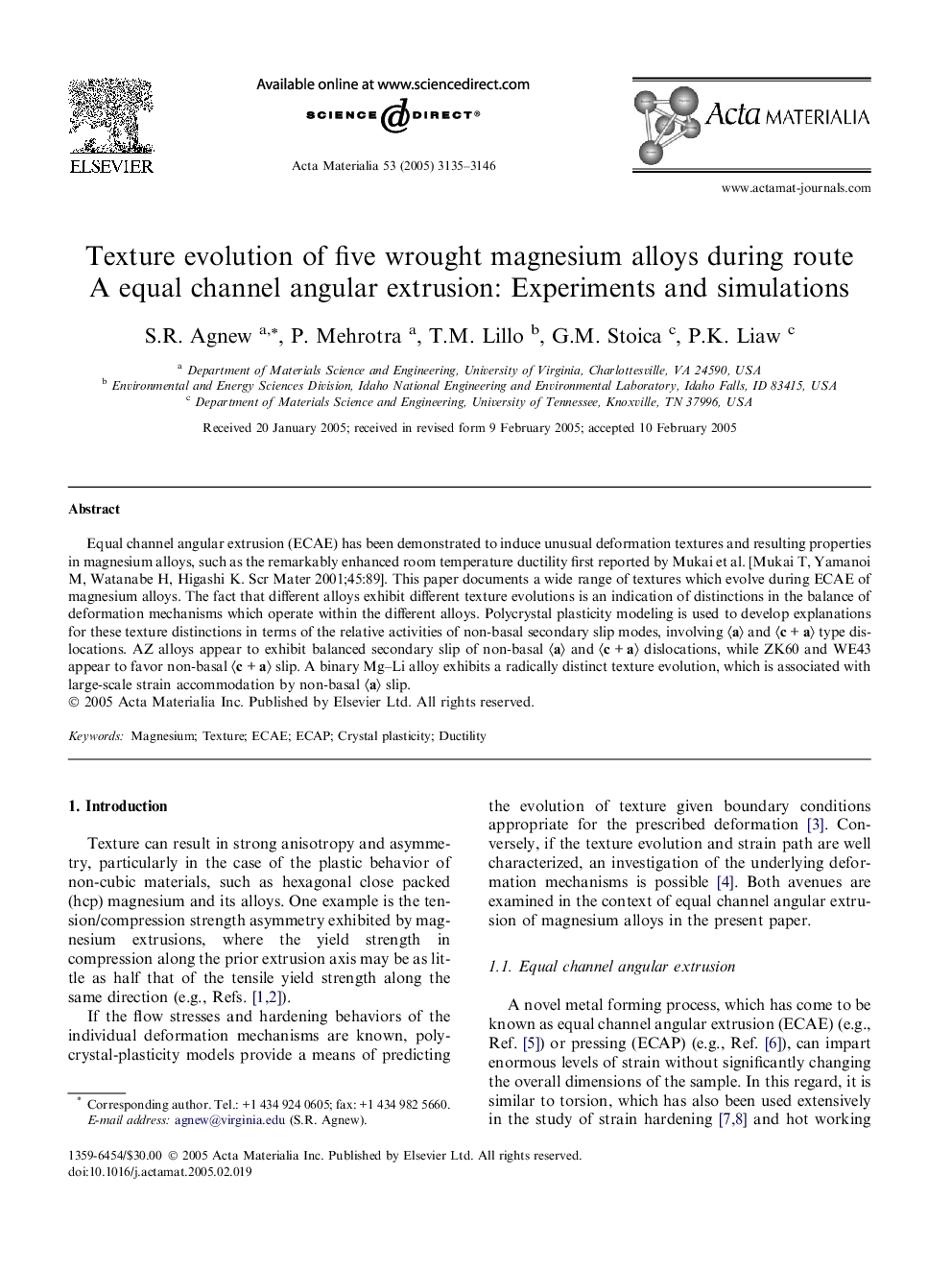| Article ID | Journal | Published Year | Pages | File Type |
|---|---|---|---|---|
| 1451239 | Acta Materialia | 2005 | 12 Pages |
Equal channel angular extrusion (ECAE) has been demonstrated to induce unusual deformation textures and resulting properties in magnesium alloys, such as the remarkably enhanced room temperature ductility first reported by Mukai et al. [Mukai T, Yamanoi M, Watanabe H, Higashi K. Scr Mater 2001;45:89]. This paper documents a wide range of textures which evolve during ECAE of magnesium alloys. The fact that different alloys exhibit different texture evolutions is an indication of distinctions in the balance of deformation mechanisms which operate within the different alloys. Polycrystal plasticity modeling is used to develop explanations for these texture distinctions in terms of the relative activities of non-basal secondary slip modes, involving 〈a〉 and 〈c + a〉 type dislocations. AZ alloys appear to exhibit balanced secondary slip of non-basal 〈a〉 and 〈c + a〉 dislocations, while ZK60 and WE43 appear to favor non-basal 〈c + a〉 slip. A binary Mg–Li alloy exhibits a radically distinct texture evolution, which is associated with large-scale strain accommodation by non-basal 〈a〉 slip.
